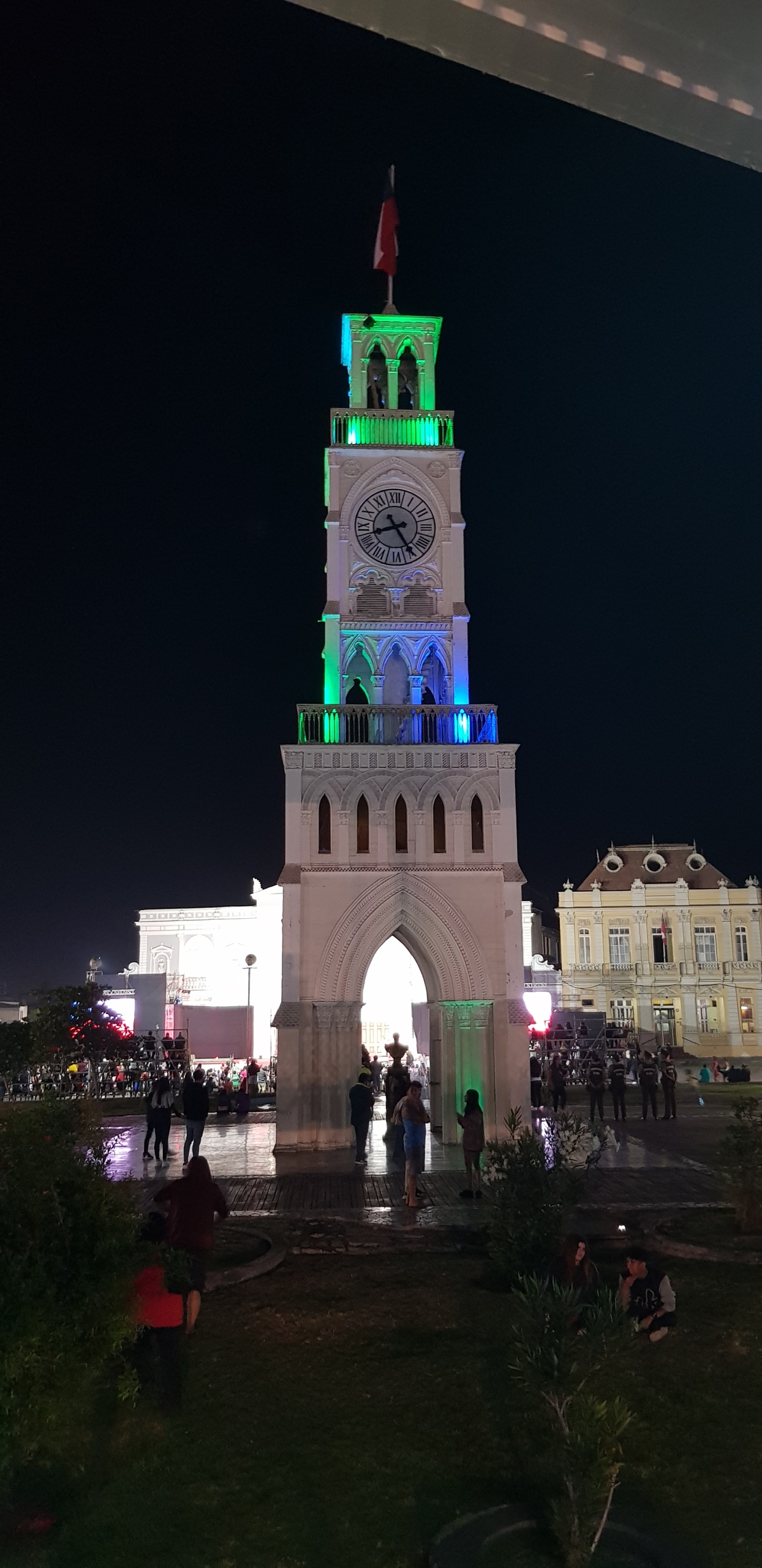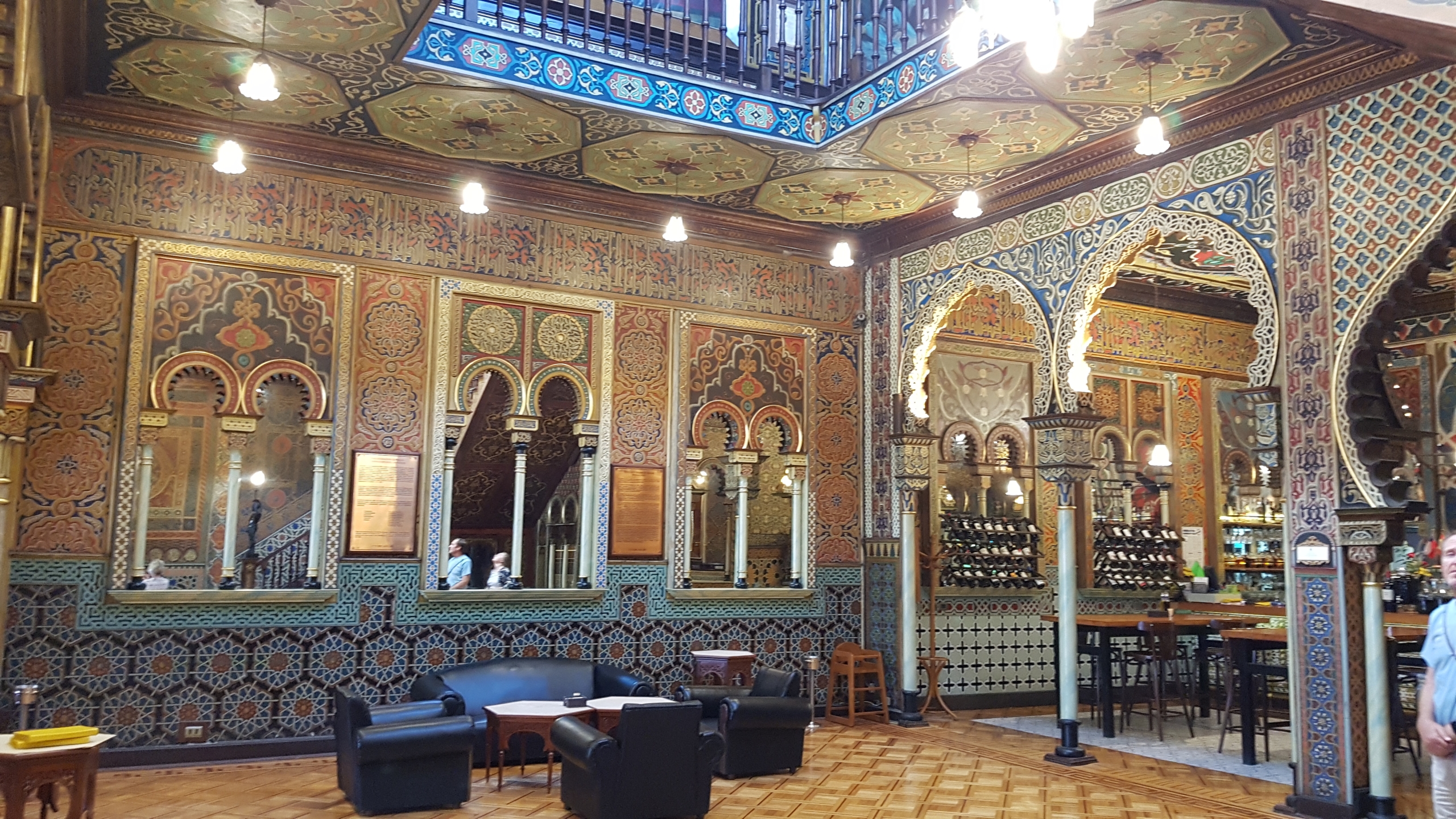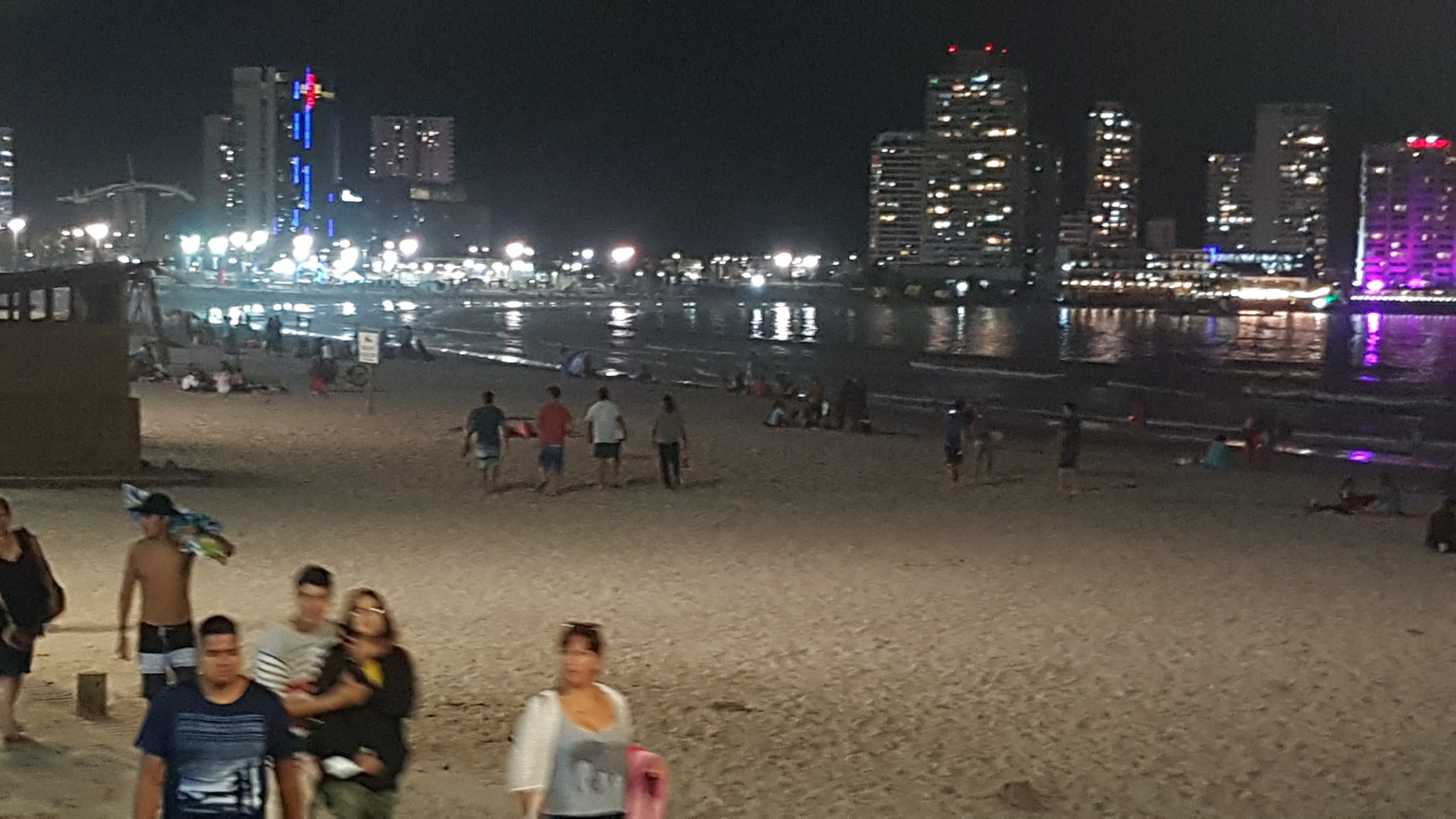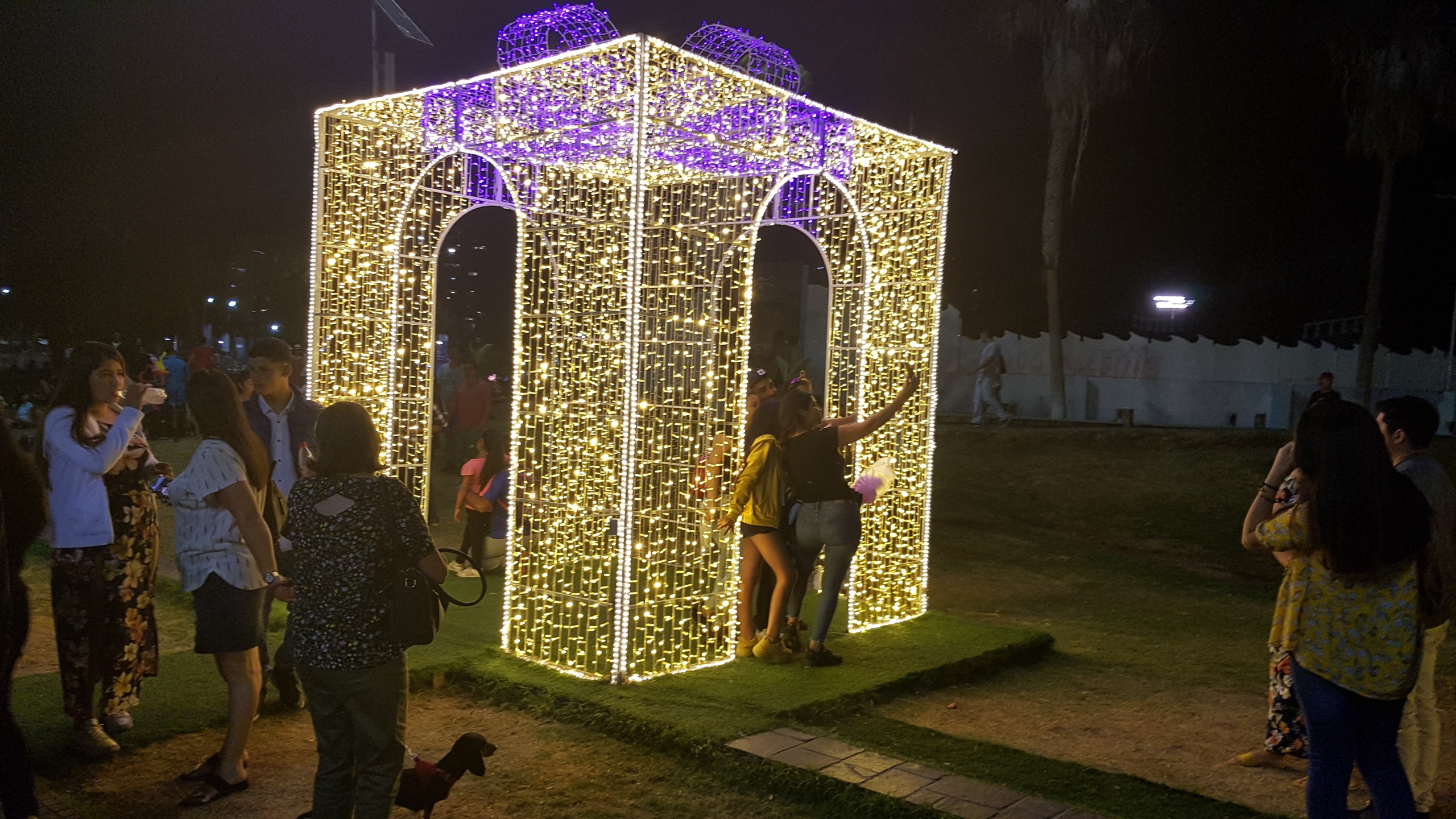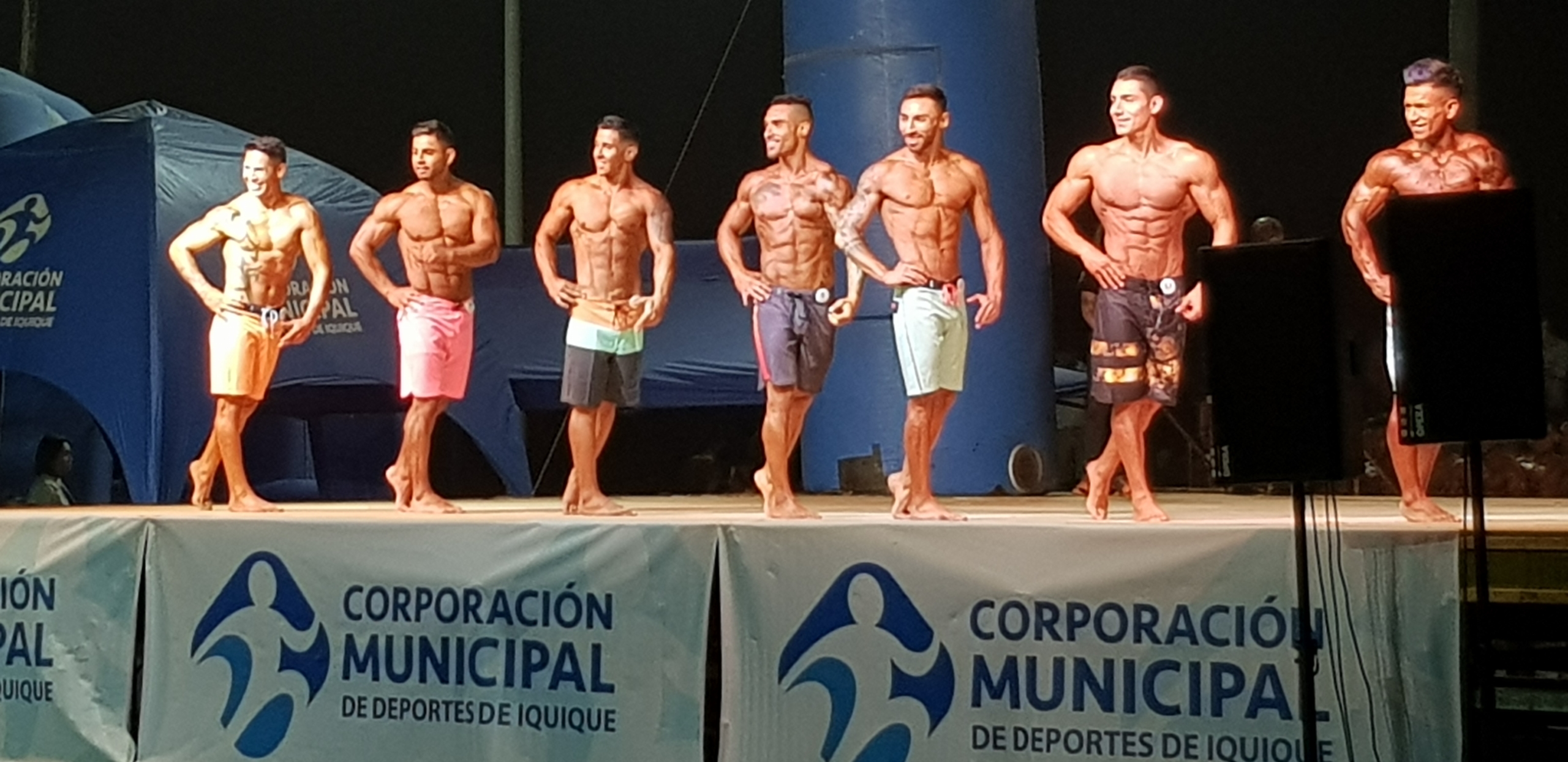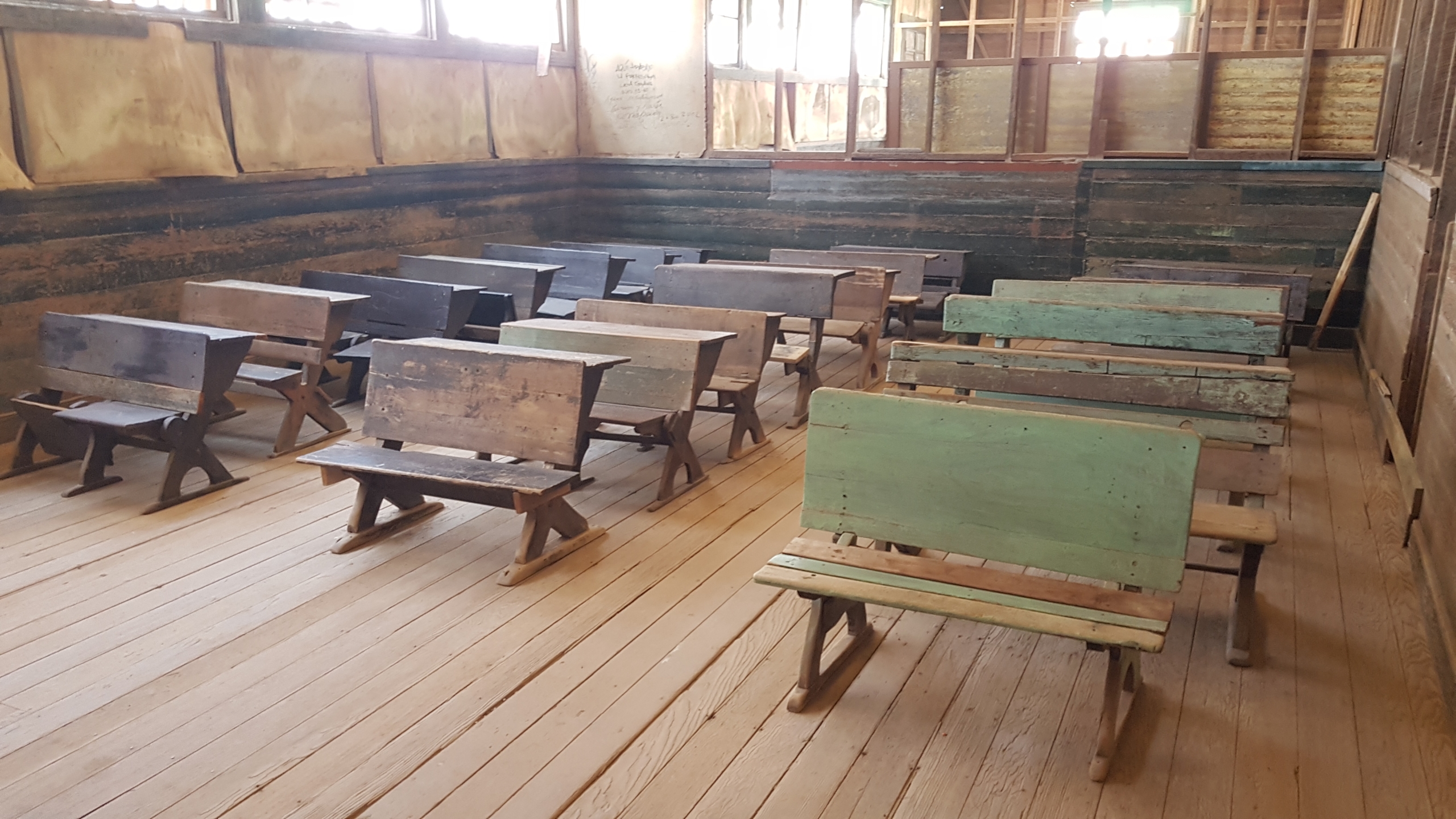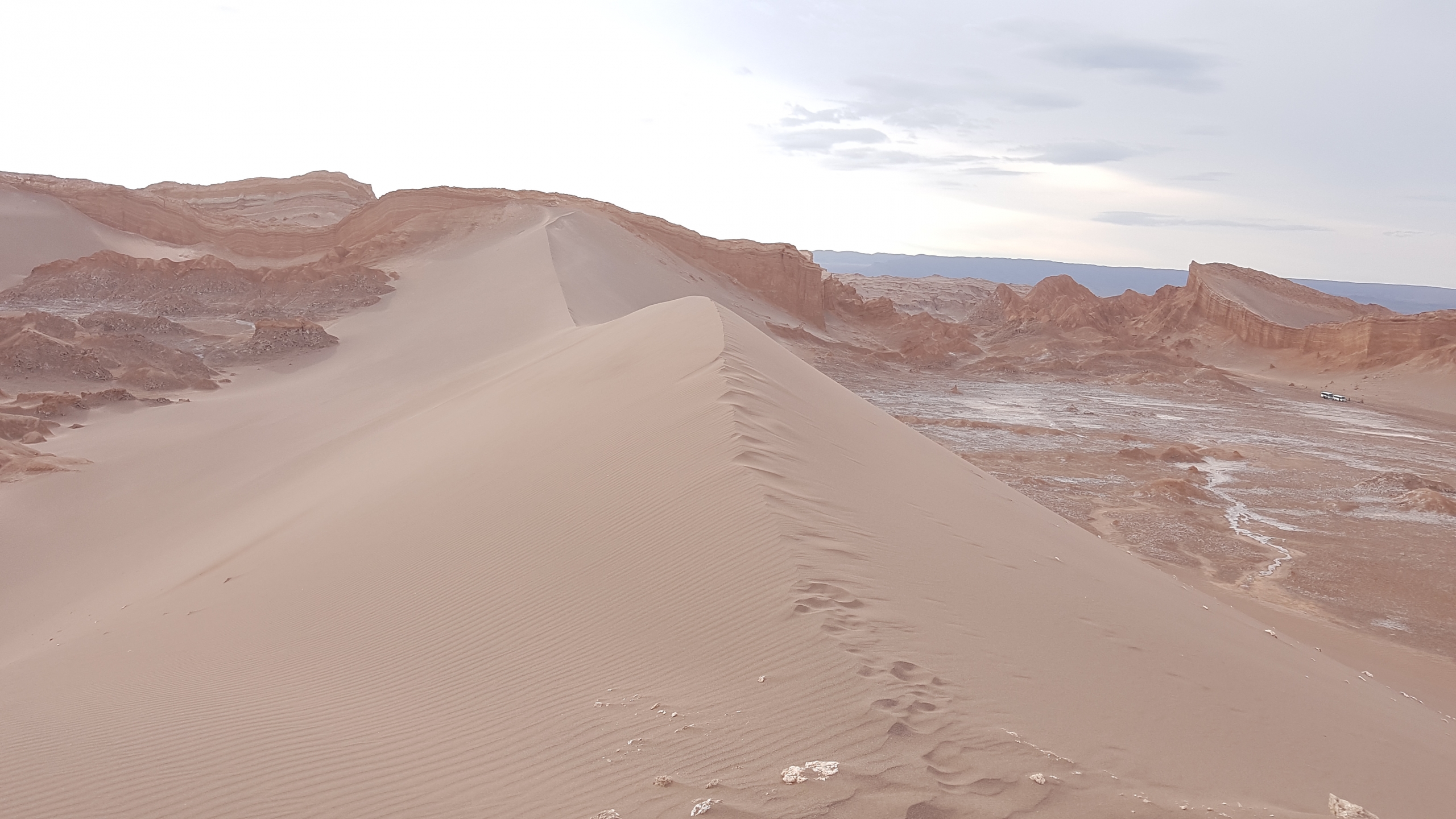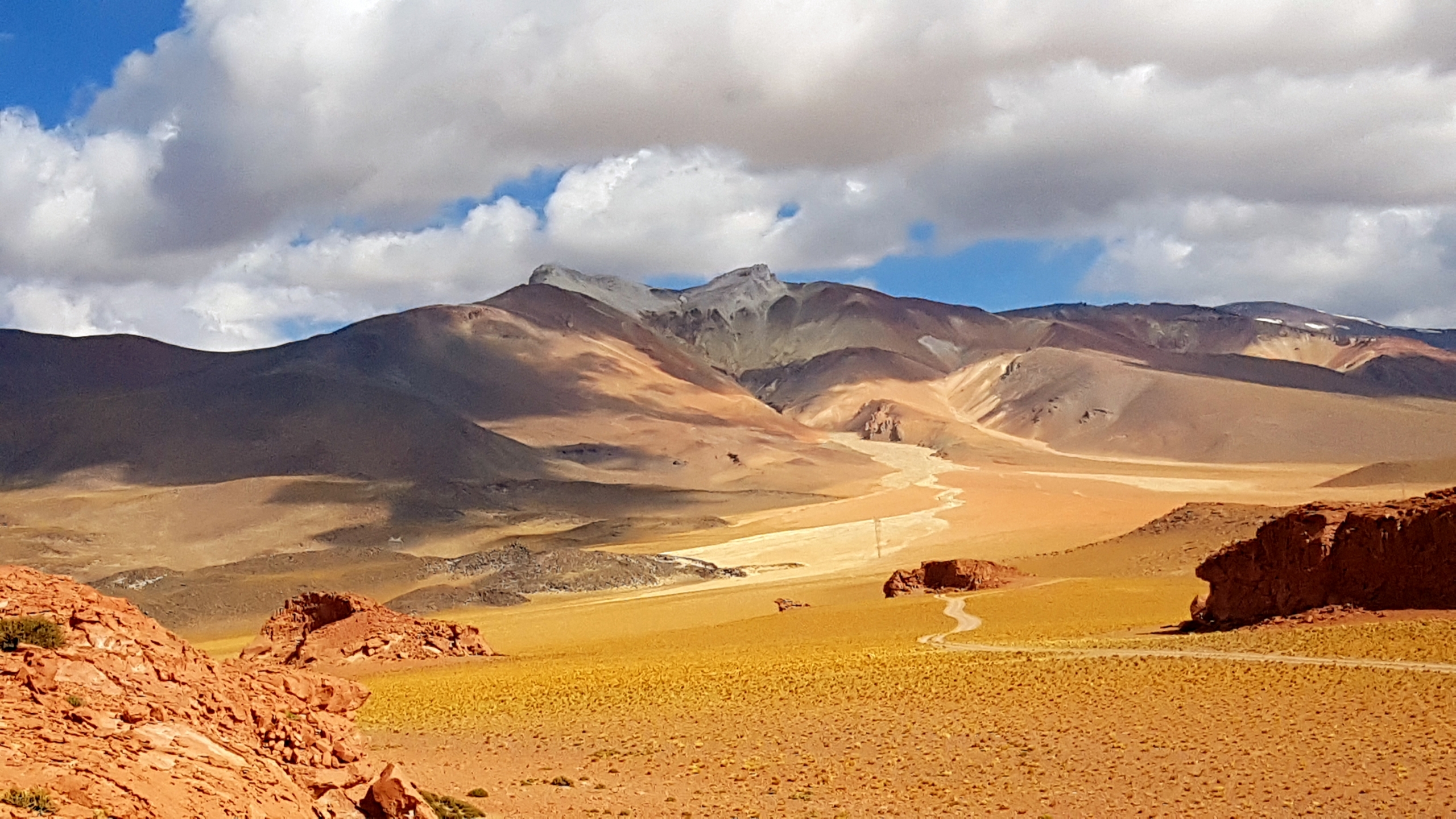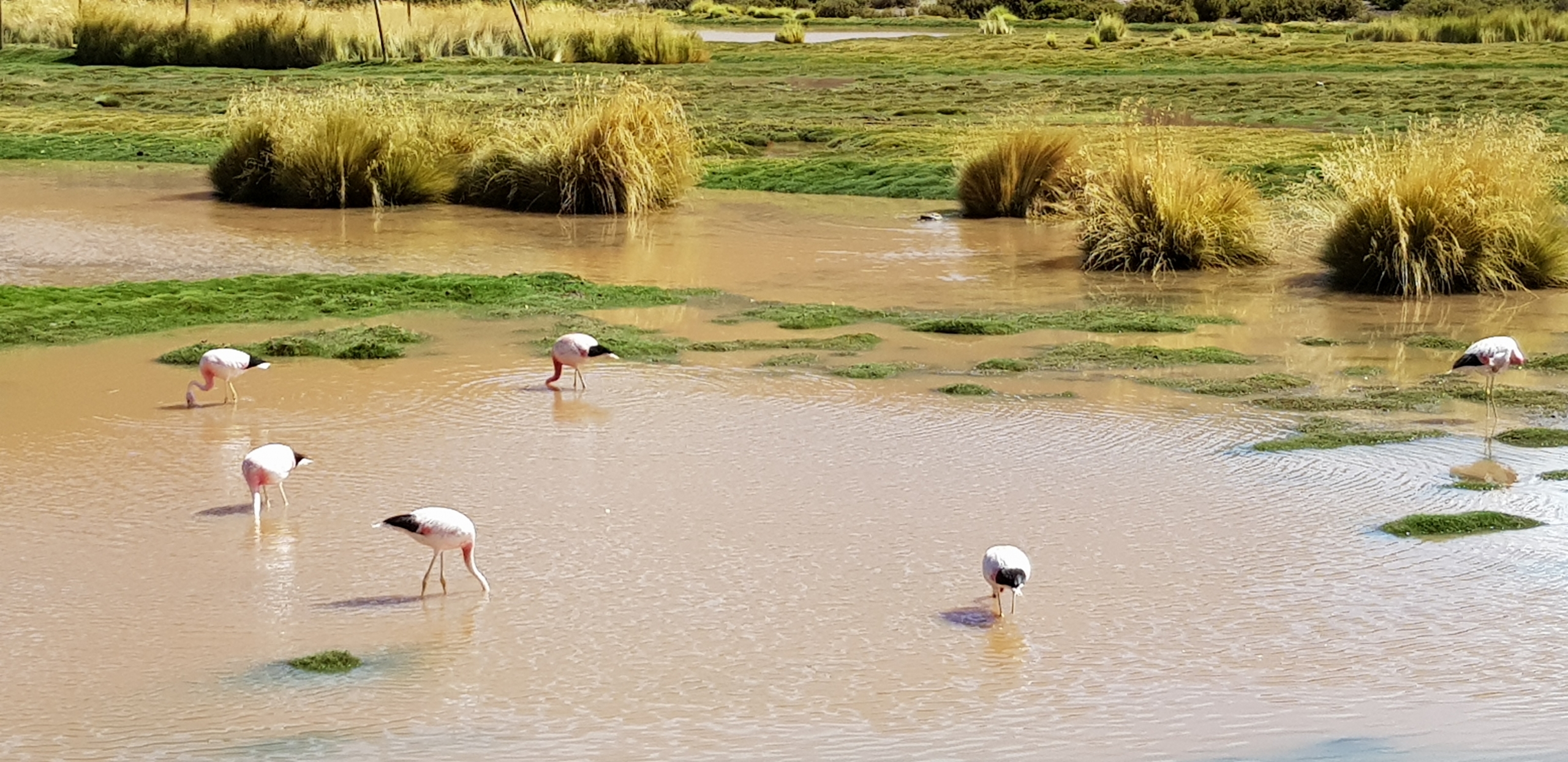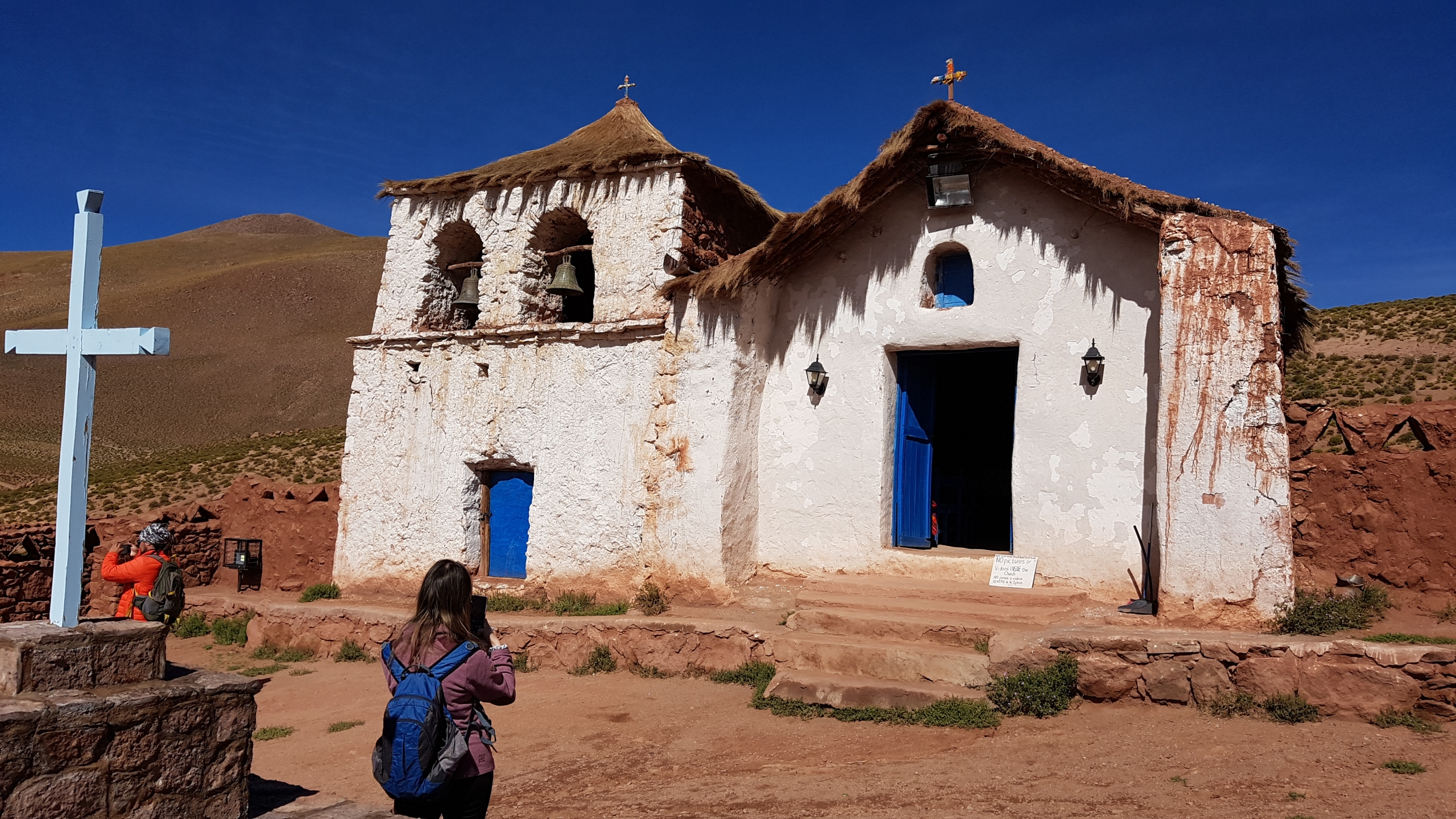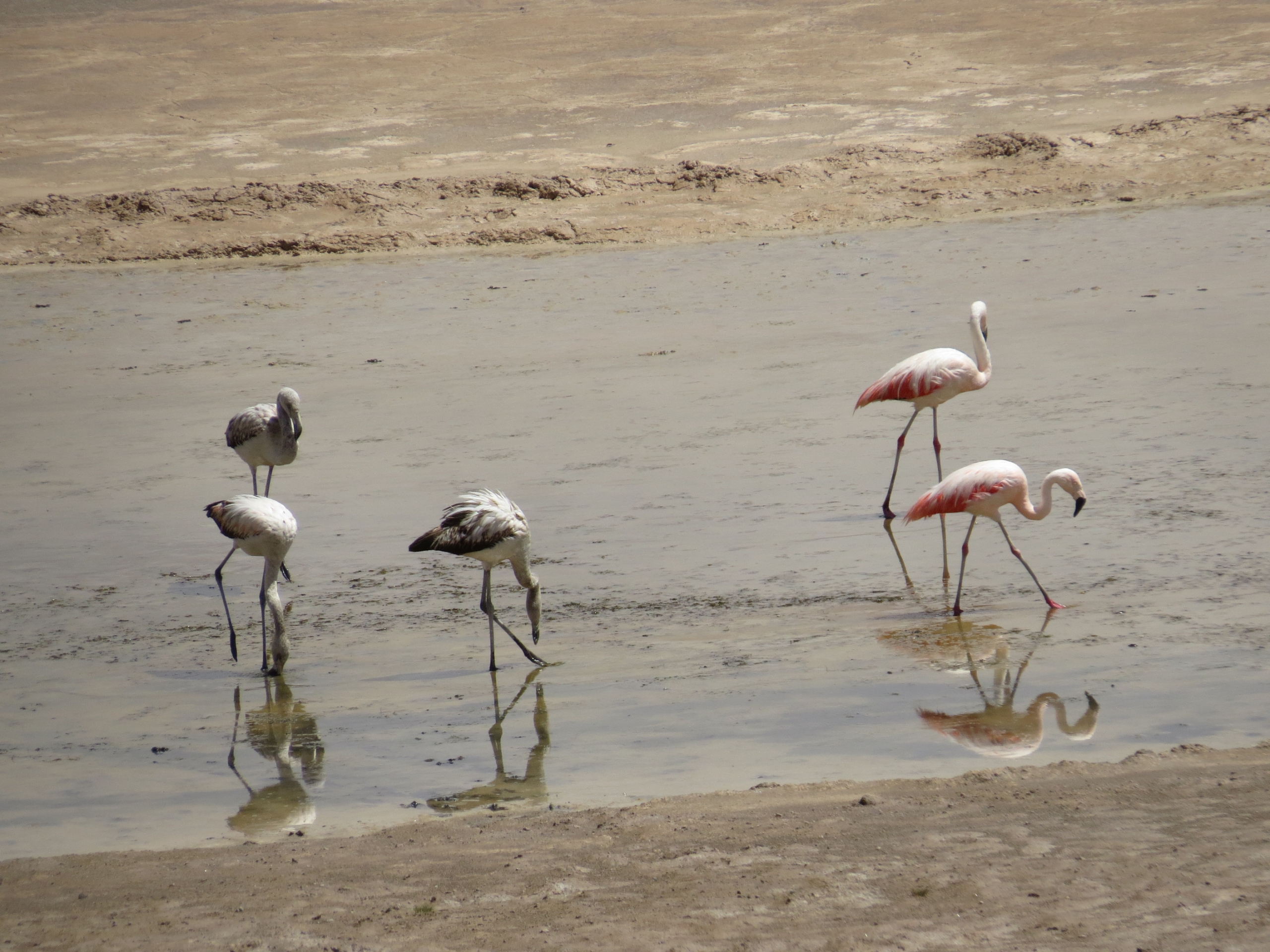Iquique is a young old city that was the capital of the Chilean saltpetre industry in the 18th and 19th centuries. From this time date many city palaces and a prestigious theater and a beautiful plaza. Unfortunately, the salpetre boom ended around 1920 and then it came to the decline of the city. In the 19th century, tourism and the free trade zone gave the city a boost and today it has about 220,000 inhabitants. One of the most important sights is the Plaza Arturo Pratt with the striking clock tower and the imposing theatre building behind it.
The Plaza is also home to the Moorish-style Centro Espanol. And of course Don Juan and Sancho panza are not to be missed. Other places of interest: Avenida Bouquedano is a wide and very well preserved street with old villas… the wide beach and the beautifully developed beach promenade on the especially in the evening was very busy. We were amazed at the number of large hotels and skyscrapers and how crowded the city and beaches were. In the vicinity of the fish market, several sea lions, pelicans and seagulls await the fish remains that are thrown into the water.
Humberstone, near Iquique, was an important site for the mining of saltpetre. The saltpeter was first used for gunpowder later as a fertilizer. However, in the 1920s it was replaced by artificially produced chemical products. The dilapidated Humberstone industrial complex has been faithfully rebuilt, is now an industrial museum and is listed as a UNESCO World Heritage Site. There were here:
- school
- cinema
- theatre
- central place
- church
- shops.
The workers employed in the mining of saltpetre received starvation wages in the form of stamps which were valid only in Humberstone. So they couldn’t go anywhere else. In 1907 they went on strike and demonstrated and the army shot about 2000 of them.
And this is what the longest road in the world looks like, the Panamericana near Iquique. We also stayed a few hours in a shopping center in the duty-free area Francia 1. On February 18th we took the public bus to San Pedro de Atacama, the last stop in Chile on our trip.
For Andre, the Atacama Desert was a dream destination par excellence and one of the absolute highlights of the trip. The Atacama Desert is said to be the driest place on earth but with a fascinating landscape and fauna. And because the desert is so dry, an international consortium has installed a huge telescope observatory here. Despite the intense tourism, San Pedro has managed to keep the original architectural style: houses made of dried clay tiles, roofs covered with cactus wood and hardly any windows to keep the heat out. However, the prices for food, accommodation and excursions are very high.
Our hotel had a cozy courtyard that Andre really enjoyed.
We have attended several guided tours. Valle de la Luna, an impressive moon-like landscape with thousands of earth crusts, depressions, dunes, rocks and basins. Wind and weather have had the chance to prove themselves as excellent sculptors. Valle del Luna is visited at dusk, when the weakening daylight conjures up very interesting lighting effects.
In another trip we are to the Salar Talar and the Lagunas Altiplanicas in the Los Flamencos National Park. On the way the earth shone in golden colors and a Viscacha had chosen a sunny place. On the way to the Salar de Talar we saw many viscunas and flamingos.
A salar consists of a mixture of salt and desert sand, including a lithium-containing brine. Inflowing water emerges in sporadic pools that form important biotopes. Many flamingos and other birds live in these biotopes. Unfortunately, lithium is now mined in the salars and thus the salars dry out. That is why more and more habitats for animals and birds are disappearing. One of the few salars that should be intact is the Salar de Ujuni in Bolivia. But we would have been on the road for three days and the accommodations are miserable and therefore we did not make the trip. Unfortunately, the visit of the largest salar in the area, the Salars de Atacama was not allowed probably because a lithium mine already existing there was further expanded.
At the Salar Talar the earth shines in many colors and the impressive cloud formation in the blue sky completes the landscape. In the background rises majestically the volcano Caichinque, The lagoons of Miskanti and Miniques lie at the foot of the snowy volcanoes of the same name.
In contrast to Valle de La Luna, you have to go to the Tatio geysers very early in the morning. We were a bit disappointed by the volcanic field because we were in Iceland a few months earlier. Near the geysers there is a natural pool with warm water in which the tourists have bathed. On the way back we visited an Andean village and drove past a Bofedal with many Viscunas and Flamingos.
The last trip was to the Salar de Tara. The flamingos use a special technique called “stamping” for foraging. They stomp with their feet because they raise more larvae and insects from the ground which they can then eat. One sees clearly that there were two varieties of flamingos: the black and white feathered ones are the Andean flamingos, the pink and white feathered ones with black beak are the Chile flamingos. Another highlight was the impressive rock formation called “el monje de tara” (the monks of tara). These are freestanding rock fingers up to 30 m high that allegedly originated during a volcano eruption.
On February 23rd we left Chile after more than six weeks and drove in an 11-hour bus ride across the Andes to Salta in Argentina.

